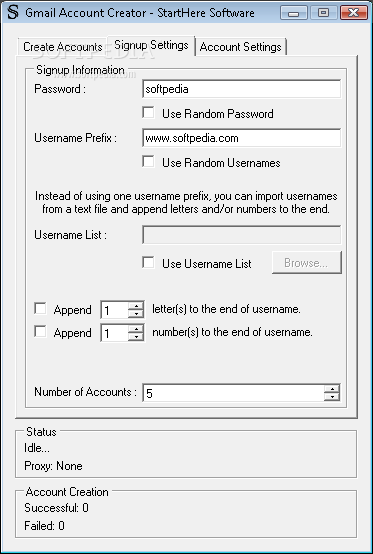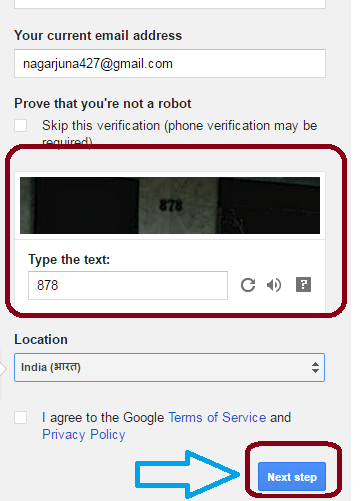Gmail Account Creator Script
- To create another Gmail account, you'll need a shiny new account creation link. (make script witch start browser goes to 192.168.x.x and press restart button in.
- Sign in - Google Accounts.
Auto delete emails after X number of days. Very often, after we read the email, we will just keep it in. Confirm your account. Gmail generator - Gmail dot Trick, Fake gmail generator, Fake gmail, Googlemail Trick. Create many new Gmail email addresses for free. New Email Generator domain name You want to have a long-term mailbox, then add your own domain to the email generator. It is very easy to become part of the mail generator.
Google Apps Script is one of the best hidden features of Gmail.
Did you ever want just a bit more flexibility from a filter? Maybe the ability to remove a label, or match on a header, or just decide the order they are applied in.
Apps Script can do all that and then some. They are simple JavaScript programs with access to the Gmail API that run as cron jobs on Google servers. They are free and don't require a GCP account. They can even send emails.
One could build some pretty complete bots by giving them their own Gmail account, but here I just wanted to mark Gerrit CL threads as read when I was the last to act on them.
I know I could just write a bot in Go using the APIs, but then I'd have to take care of deployment, and authentication, and it's just not worth it anymore. Apps Script are point and click.
This is a 'Technical note' post, if you want to only follow a subset of this blog check out the tags.
Setting one up
For setting up a script I'll point you to one of Benjojo's projects, who told me about this feature. It has screenshots and everything.
Come back when you have it running. You can use this minimal script as a first program just to trigger permissions:
There's no deployment or authentication effort beyond setting the schedule and clicking through the OAuth dialog.
Let's get serious
The IDE at scripts.google.com makes an attempt at tracking types for autocompletion, but it doesn't even cross forEach or function boundaries. Not enough to make tolerable a language that has 1K points controversial StackOverflow answers on how to iterate an array.
And anyway I want to use my editor and git, like a proper homo sapiens, so let's see how to develop scripts locally with clasp and TypeScript. BTW, TypeScript is awesome.
Start by installing clasp, and don't skip the part about enabling the Apps Script API. Do a clasp login, too.
Then in a new folder create a .clasp.json file with this content:
You'll find the scriptID in the scripts.google.com URL, before the /edit part. We use built as the rootDir so that we can put our TypeScript source outside of it.
Just once run clasp pull to populate the built/appsscript.json file. clasp push will upload to our Script the content of built which we will generate soon.
Create a TypeScript config file tsconfig.json file like this (most things are preferences, but notice the target, lib and outDir):
Then put some TypeScript code in src/Code.ts and run tsc --pretty to generate JavaScript in built!
And here's the kicker: running npm install --save @types/google-apps-script will make type definitions for the Gmail API available to TypeScript, so an editor like Visual Studio Code will come with proper autocompletion out of the box.
This is getting a bit too hip, so we add an old-fashioned Makefile:
And sprinkle .gitignore to taste. I like to exclude the generated JavaScript (but not the JSON metadata) and the node_modules as we have a package-lock.json:
Now you can develop in TypeScript inside src, with full types and autocompletion support, and deploy to your Apps Script with make deploy. Google will run the Script every 5 minutes (if you followed Ben's instructions).
For more yak shaving, follow me on Twitter.
Complete the steps described in the rest of this page to create a simpleGoogle Apps Script that makes requests to the Gmail API.
Prerequisites
To run this quickstart, you need the following prerequisites:
Step 1: Create the script
- Create a new script by going to script.google.com/create.
- Replace the contents of the script editor with the following code:
New editor

- Click Save .
- Click Untitled project at the top left, type Quickstart, and click Rename.
Legacy editor
- Click File > Save,name your project “Quickstart”, and click OK.

Step 2: Turn on the Gmail API
Enable the Gmail API advanced service in your script.
Step 3: Run the sample
New editor
In the Apps Script editor, click Run.
The first time you run the sample, it will prompt you to authorize access:
- Click Review permissions.
- Choose an account.
- Click Allow.
The script's execution log appears at the bottom of the window.
Legacy editor
In the Apps Script editor, click Run >listLabels.
The first time you run the sample, it will prompt you to authorize access:
- Click the Continue button.
- Click the Accept button.
To view the script's output, click View > Logs.

Further reading
Troubleshooting
This section describes some common issues that you may encounter whileattempting to run this quickstart and suggests possible solutions.
ReferenceError: '[API NAME]' is not defined

Mass Gmail Account Creator
This error occurs when the API hasn't been toggled on in the Apps Script codeeditor. Revisit Step 2.b and ensure the corresponding toggle is set to on.
This app isn't verified.
Gmail Account Creator Script Generator
The OAuth consent screen that is presented to the user may show the warning'This app isn't verified' if it is requesting scopes that provide access tosensitive user data. These applications must eventually go through theverification process toremove that warning and other limitations. During the development phase you cancontinue past this warning by clickingAdvanced > Go to {Project Name} (unsafe).